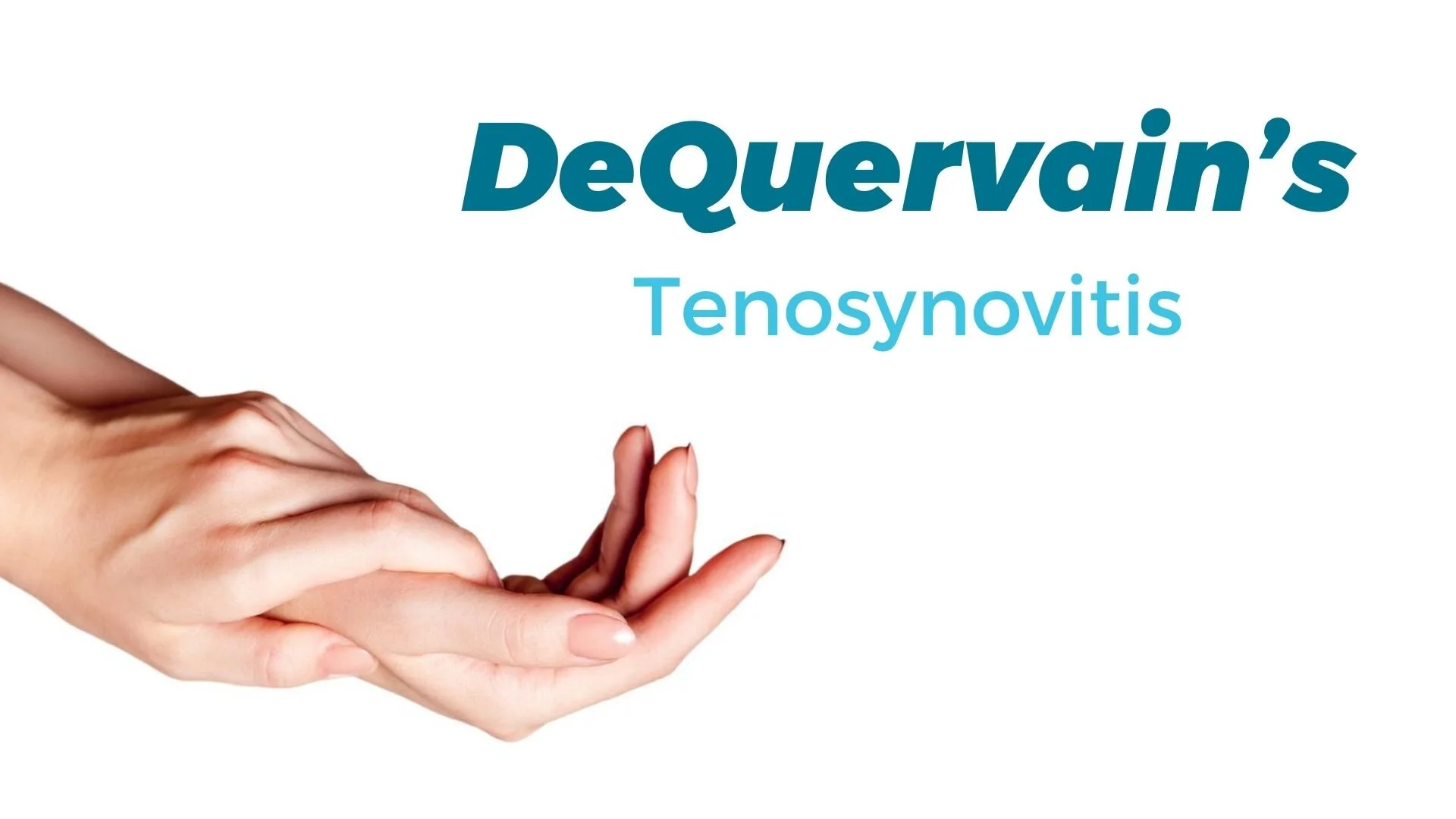DeQuervain’s Tenosynovitis refers to the swelling of the synovial sheath which surrounds tendons of the thumb, specifically the Abductor Pollicis Longus (APL) and the Extensor Pollicis Brevis (EPB) tendons.
Presentation:
This condition presents as pain and/or tenderness along the thumb side of the wrist. This pain may or may not travel up along the forearm as well and may be present when moving the thumb, wrist, or when gripping. Swelling along the thumb side of the wrist can also be present.
Cause:
DeQuervain’s is typically caused by repetitive motion or use of the thumb or forceful gripping while deviating the wrist towards the pinky side of the hand. As a result of chronic, repetitive microtrauma the sheath or synovium that surrounds the Abductor Pollicis Longus (APL) as well as the Extensor Pollicis Brevis (EPB) tendons becomes inflamed and thickened. The APL and EPB are tendons which are responsible for moving the thumb into abduction (away from the midline of the body) as well as extension (moving the thumb back, away from the palm side of the hand). DeQuervain’s Tenosynovitis is more common in women, especially following pregnancy, and in individuals with arthritis.
How We Can Help:
A musculoskeletal specialist can aid in helping you diagnose this condition as well as help to decrease the symptoms and reach complete improvement. We can help identify activities which are aggravating this complaint, aid in modifying such activities, recommend rehabilitative exercises which will aim to strengthen the musculature surrounding the thumb and wrist, recommend the potential use of a splint if needed, as well as provide anti-inflammatory mechanisms which have been shown to be effective at treating DeQuervain’s Tenosynovitis.
Article authored by Radius Provider
The views expressed in this article intend to induce conversation. This article is not, nor is it intended to be, a substitute for professional medical advice, diagnosis, or treatment, and should never be relied upon for specific medical advice.


